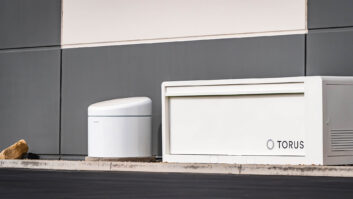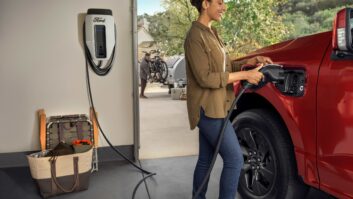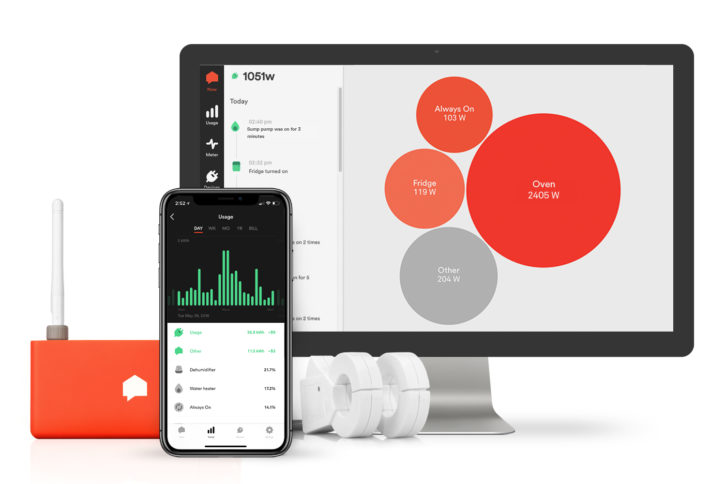
Pop quiz: What is the one thing that nearly every item we install in customers’ homes has in common?
Power.
Whether it’s a connection to a wall outlet, surge protector, PoE, or a battery, practically every device we install needs to be powered in some way. (If you said, “Well, what about sound treatments?!” just know that I’m giving you a scathing eye-roll and slow clap…) And when you think of all of the devices installed on a typical job — displays, receivers, set-top boxes, subwoofers, networking components, shades, controllers — that adds up to a lot of energy usage. But in the scheme of a home’s overall energy consumption, our stuff isn’t even anywhere near the list of the biggest offenders, which includes HVAC, appliances, and water heaters.
With an increasing number of connected, always-on devices littered throughout the modern smart home, homeowners are starting to be more aware of their carbon footprint and interested in ways to cut down on unnecessary usage.
More Reviews from John Sciacca: Intellithings RoomMe Occupancy Automation Sensors
A year ago, I decided to “go solar” at my own home. After years of $350/month electrical bills, the significant federal, state, and local power company incentives and rebates to be less reliant on the grid made it an attractive proposition, reducing the estimated pay-off time to about five-to-six years. And because we live in “hurricane alley,” the net cost of installing a full 11.38 kWh generating solar system along with a 9 kWh whole-house battery backup system was not much more than the cost of installing a whole-house generator, plus solar offered the added benefit of daily monetary savings as we’re entirely off the grid for upwards of 12 hours each day, not just when there’s a loss of power.
The Generac solar/battery system I installed came with an app (PWR View) that lets me check on general power usage in my home. At any moment I can log-in to see how much power my home is currently using, how much is being generated (7.78 kW as I write this in early January), and what is coming from (paying) or going to (selling) the grid or battery system. It’s a simple snapshot, giving a good glimpse into the macro power usage of what’s happening inside my house.
But since the switchover, I’ve become a bit of an Energy Overlord, especially after the sun goes down.
“Did you leave the light/fan on?”
“Can you not wait until nighttime to run the clothes dryer/dishwasher?”
“Who left the room with the TV on?!”
Yes, I’m a real treat to live with.
Also, there were times when I’d open the Generac app and see that my home was inexplicably using a massive 10+ kW of power for seemingly no reason; usage that would suck my whole-home battery dry in less than an hour. I wanted to eliminate, or at least understand, these usage spikes, but how can you kill the energy vampires if you don’t know what or where they are lurking?
The answer is a whole-home energy monitor like the one being reviewed here from Sense Labs.
Sense Labs was co-founded by Mike Phillips, who has a background in engineering and machine learning and who previously co-founded two speech recognition companies (SpeechWorks and Vlingo). Phillips told me that most people have no clue how power is being used in their homes and that it is hard to get visibility into usage (bingo!), and that most homes have a couple of random things in them that are using lots of power — energy hogs — that could be eliminated or managed to save money. Sense is designed to give people visibility and awareness on what is going on in their homes so they can then make informed decisions and changes.
Installation
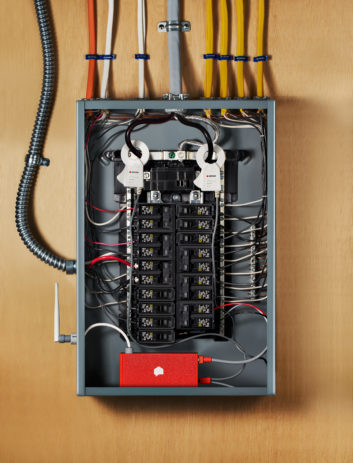
The Sense system arrives in a small orange box, and includes the monitor along with a pair of split core CT (Current Transformer) clamps that go around each phase of the main power lines feeding your panel/house. These CT clamps simply plug back into the monitor, which is about the size of an iPhone 11 but about 1.25-inches thick. The monitor draws power from an open circuit on the electrical panel, and mounts either inside or outside the electrical panel, with a detachable antenna to connect to your 2.4 GHz Wi-Fi network for data-reporting to the Sense mothership. For solar users, a separate yellow box includes an additional pair of CT clamps ($50) to go around the solar feeds that plugs into a second port on the monitor.
Even though this installation is pretty simple — it took my solar technician about 30 minutes — because we are talking about working inside your electrical panel, where touching the wrong something could literally be lethal, this should definitely be done by an electrician.
Once the monitor and CT clamps have been installed, setup is completed in the Sense app (iOS and Android versions available) where you create an account, connect to your Wi-Fi, and enter some details about the home Sense uses to compare to homes. A Web version is also available should you prefer. To get full reporting on your home’s use and cost, you can also enter billing information, such as when your billing cycle starts, if there are peak energy billing hours, how much you pay for electricity, and (with solar) how much you are paid for selling back excess energy. You can also confirm the system is online and working, seeing how much power is being used and generated.
If you’re like me, it feels like nearly every new thing added to the home requires some $5 to 15 monthly subscription, and I am sick of these recurring fees. One of my favorite things about Sense is that there are no added fees. Once you buy the hardware, that’s it. All the data, app-usage, and ongoing updates are free. I actually mentioned to Phillips that it felt like this was the kind of product that would be the perfect candidate for some kind of annual-use fee, and he said nope; the cost is built into the hardware.
Once connected, Sense starts looking at and “listening” to the energy usage in your home, using machine-learning to identify the individual energy signatures of each device. Machine learning basically comes in two versions: Supervised and Unsupervised. (There is a video titled “What is Machine Learning” at sense.com/technology that does a wonderful job explaining this concept.) With supervised learning, you “tell” the computer certain bits of information, such as what a piano and violin sound like. You then play music and the computer uses its own rules to identify the piano and violin. With unsupervised learning, you don’t tell the computer anything, but just throw massive amounts of data at it — say every song on Spotify — and it uses its own rules to identify and learn patterns in the data over time, then starts pulling it apart to identify individual instruments.
There are pros and cons to this method. The pros are that it takes absolutely zero effort or input from the end user; simply go about living your life and using devices in your home while Sense learns and discovers the individual devices. The cons are that you can’t do anything to speed up the process. Say you know that the increased blip in power is from your microwave or coffee maker. It would be great to just identify that and help Sense out, but no.
More Reviews from John Sciacca: Control4 Essential Wireless Lighting System
What Sense looks for are the unique power signatures, the on/off range, the surges and dips while devices are operating, and then untangling all of the noise in the power signal flowing through your home’s main electrical feeds and picking out individual unique signatures of devices. Sense does this by measuring your home’s power more than 1 million times per second. And with installation in “tens of thousands” of homes since the product started shipping at the end of 2015, this machine learning continues improving as more and more systems and users are identifying device signatures helping to improve the process.
Sense says it typically detects an average of 30 devices within the first year. Big consumption devices like HVAC (typically about 45 percent of a home’s use), water heaters (about 14 percent), and appliances like stoves/ovens, refrigerators, microwaves, and clothes dryers (around 13 percent) are typically identified fairly quickly, and then other things like coffee makers, toasters, televisions, hair dryers, etc. slowly fill-in over time, with the app notifying you whenever a new device is found.
In Use
The app offers several ways to see and analyze power usage in your home, broken into views labeled Now, Trends, Meter, and Devices.
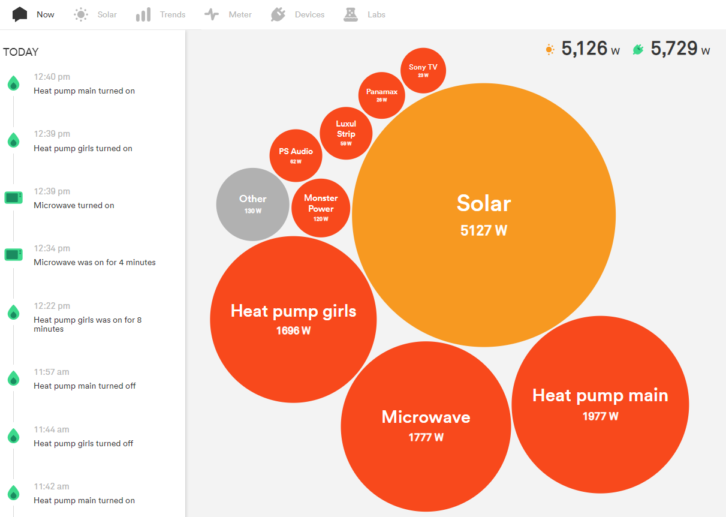
“Now” displays the home’s current energy usage in real time, displaying devices in constantly adjusting bubbles with size representing their impact. Tapping on a bubble gives additional information, such as my 65-inch Sony 4K TV is currently using 147 watts of power, but it has an always on (standby) power draw of 22 watts. It also features a timeline view showing when devices turned on/off throughout the day.
“Trends” lets you look at your home’s daily power usage over time, whether on a daily, weekly, monthly, or yearly scale, or by your billing cycle. The daily view breaks power usage down over a 24-hour period so you can see usage, and — in the case of my “free power” when the sun is up — perhaps be motivated to shift usage to other parts of the day. It also compares you to similar homes in your area, state, and across all Sense users. Trends also lets you create goals like energy usage, solar production, or always-on power to be at a certain level by a certain time period, allowing you to quickly see how you’re doing.
“Meter” is a fantastic real-time tool that displays a constantly moving graph that displays the fluctuating dips and peaks in power usage in your home. This meter allows you to get about as granular as you like, displaying usage monthly, weekly, daily, hourly, and even by the minute, allowing you to zoom in and literally check the impact of practically any device the instant you power it on. If you want to get really OCD with your home’s energy usage, the meter will be your jam. With the meter you can walk around the house in the dead of night when everything is off, and flip things on/off to watch their exact impact on your home’s energy consumption. (It would be great if you could identify these devices for Sense, but, well, machine learning.)
“Devices” displays all of the items that Sense has identified, letting you check specific usage over time, when it turned on/off during day, the estimated yearly cost, and how much it contributed to the percentage of your monthly energy usage. You can also set alerts to be notified when the device turns on/off, or if it has been on for a certain period of time.
Beyond this, Sense actually analyzes your home’s power signature for any issues that could pose bigger problems. This includes looking for motor stalls, which could be indicative of a motor in an appliance or HVAC system starting to fail, looking for any incoming voltage dips and spikes outside normal range that could be indicative of a problem with the incoming service, and checking for any “floating” neutrals. You can also opt into a monthly energy usage newsletter
My installation turned out to be very atypical (surprise?) due to my solar panel’s energy inverter, backup battery system, and separate critical loads panel (eight circuits fed by the battery in event of power loss). Since energy management for these circuits were handled within the inverter, Sense could not “see” them, and actually confused power drawn by those critical circuits as solar generation. It also cut down on what Sense could identify since these critical loads included my bedroom, kitchen, family room, garage refrigerator, etc.
Fortunately, Sense supports integration with smart power outlets from TP Link and Belkin Wemo. With a couple of these smart strips, I was able to instantly identify 12 devices and start monitoring and recording their energy usage. (As well as having an incredibly inexpensive way of quickly rebooting these individual outlets remotely if need be.)
Speaking of integration, Sense also works with Amazon Alexa and Google Assistant if you want to ask how much power is being used, if a device is on/off, etc. There are also IFTTT applets for integration based on powered events, as well as Phillips Hue lighting support directly within the app.
Research shows that when people see how device usage affects energy consumption and cost savings, they will alter their behavior accordingly; just tweaking your thermostat a couple of degrees — even if overnight — can make a considerable difference. Knowledge is power, and Sense gives deep insight into your home’s power usage, giving you the information needed to make informed decisions on how you use your power.
Kudos: Does an incredible job of providing insight to a home’s energy usage; knowledge is power; no subscription fees; affordable ($299 for Sense; $349 for Sense Solar)
Concerns: Nothing you can do to speed up or assist the identification process
Product Specs:
- Monitors two phases of 110/120VAC power usage
- CT sensors CAT III 300V 200A max
- Optional Sense Solar kit for use with solar installation
- Installation by licensed electrician recommended
- Wi-Fi (2.4 GHz) connection to network
- Amazon Alexa and Google Assistant for voice integration; IFTTT applet support
- iOS and Android app with o usage or monitoring fees



